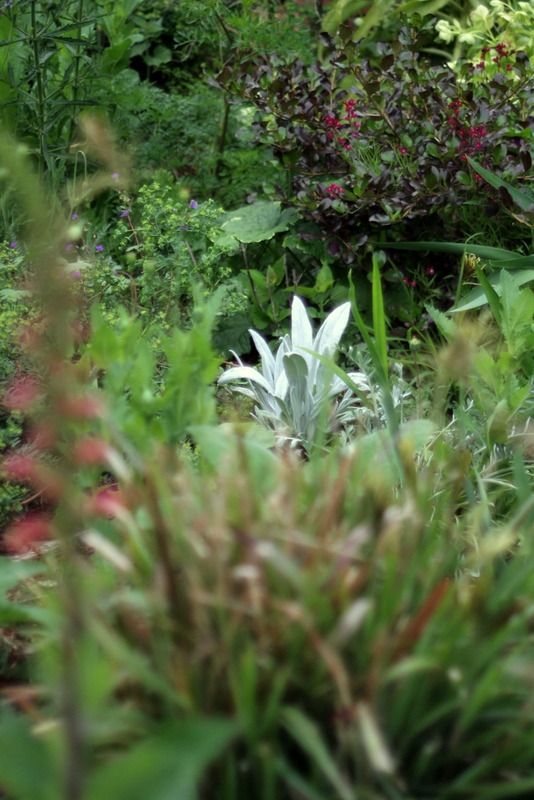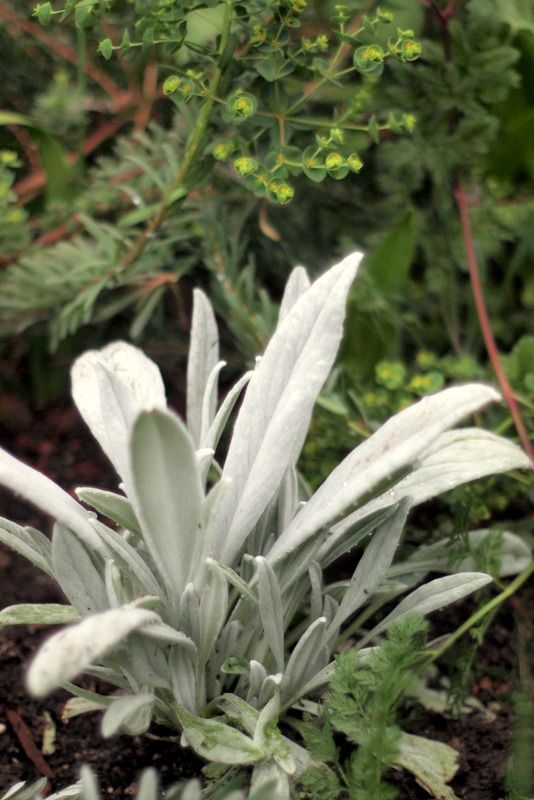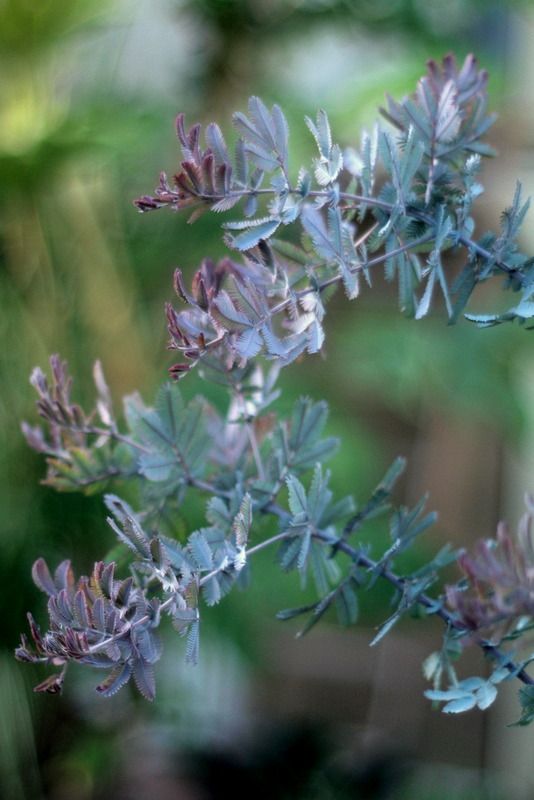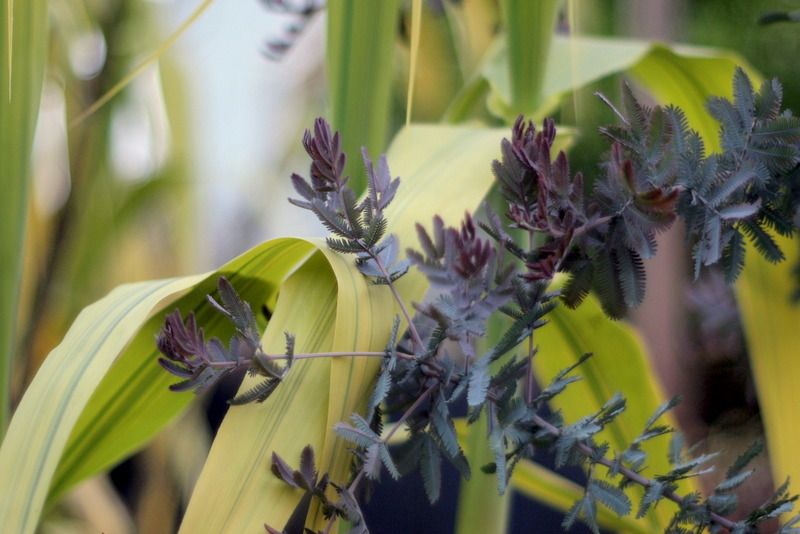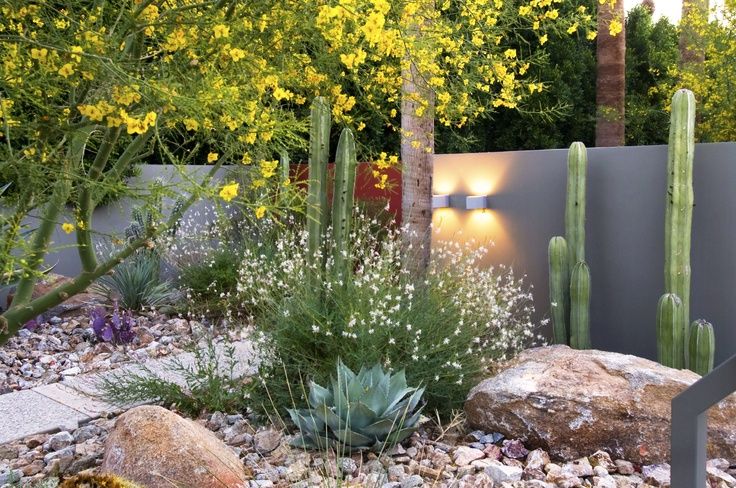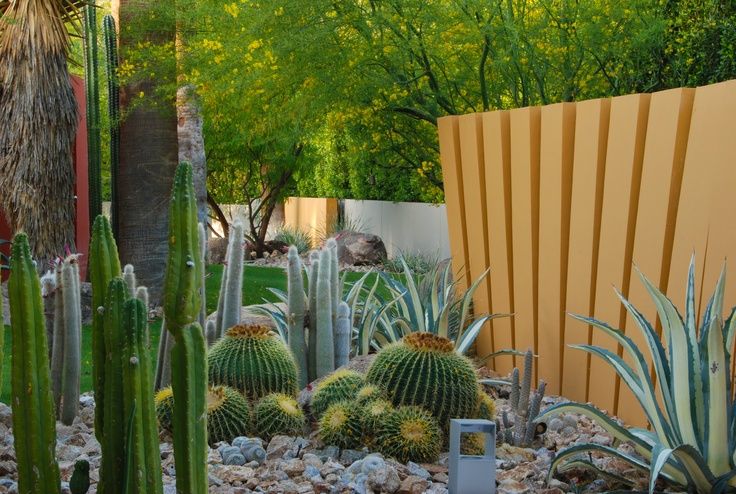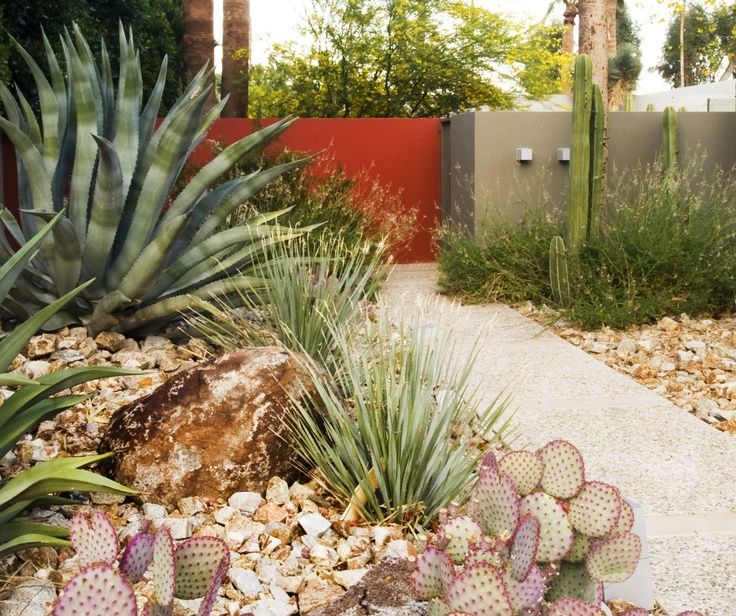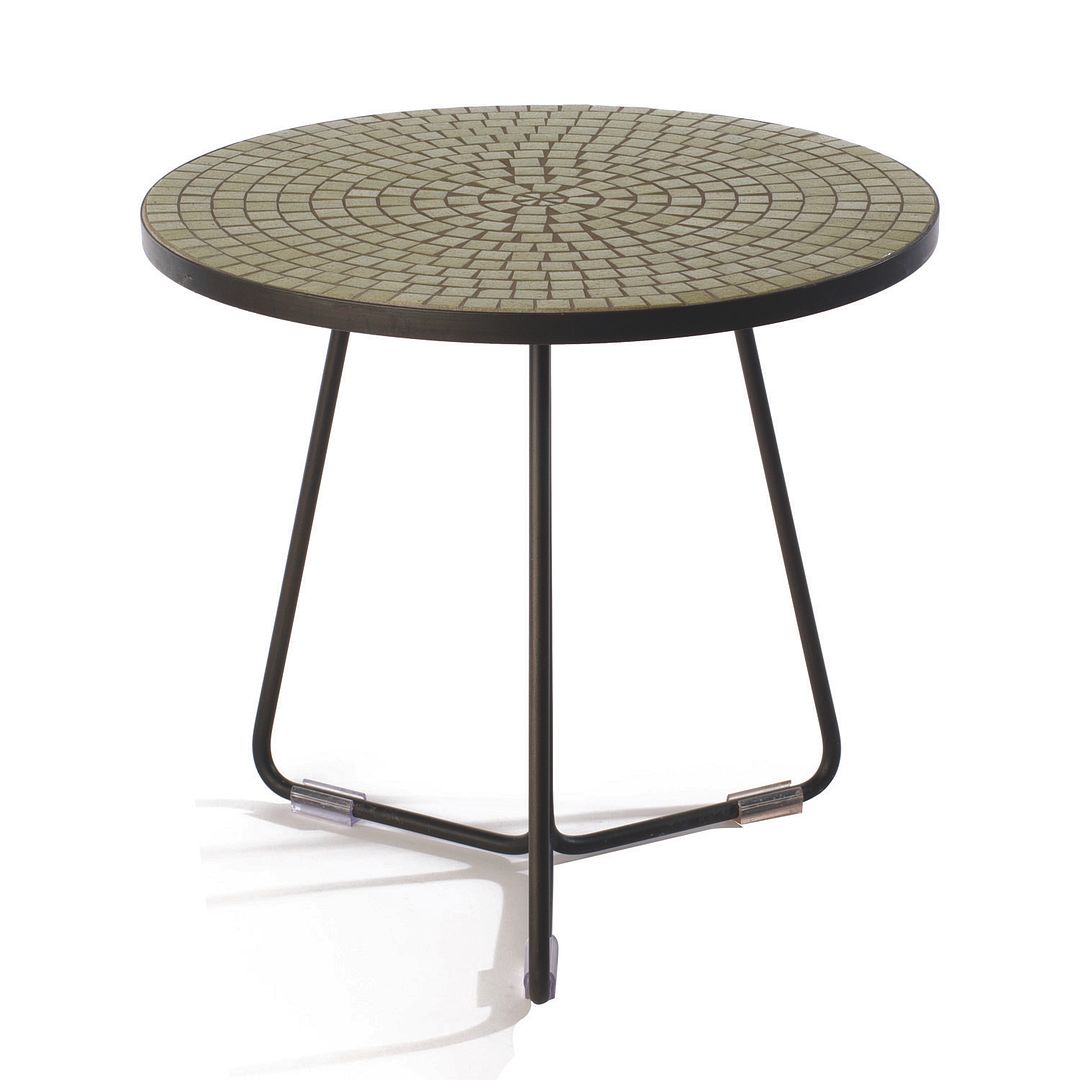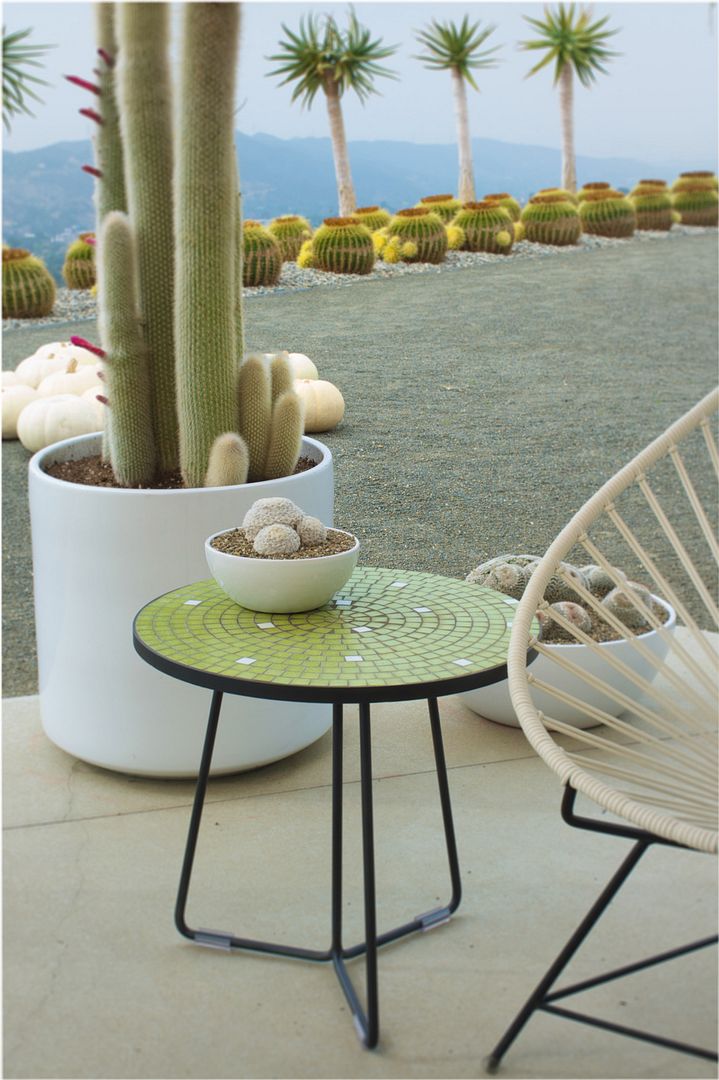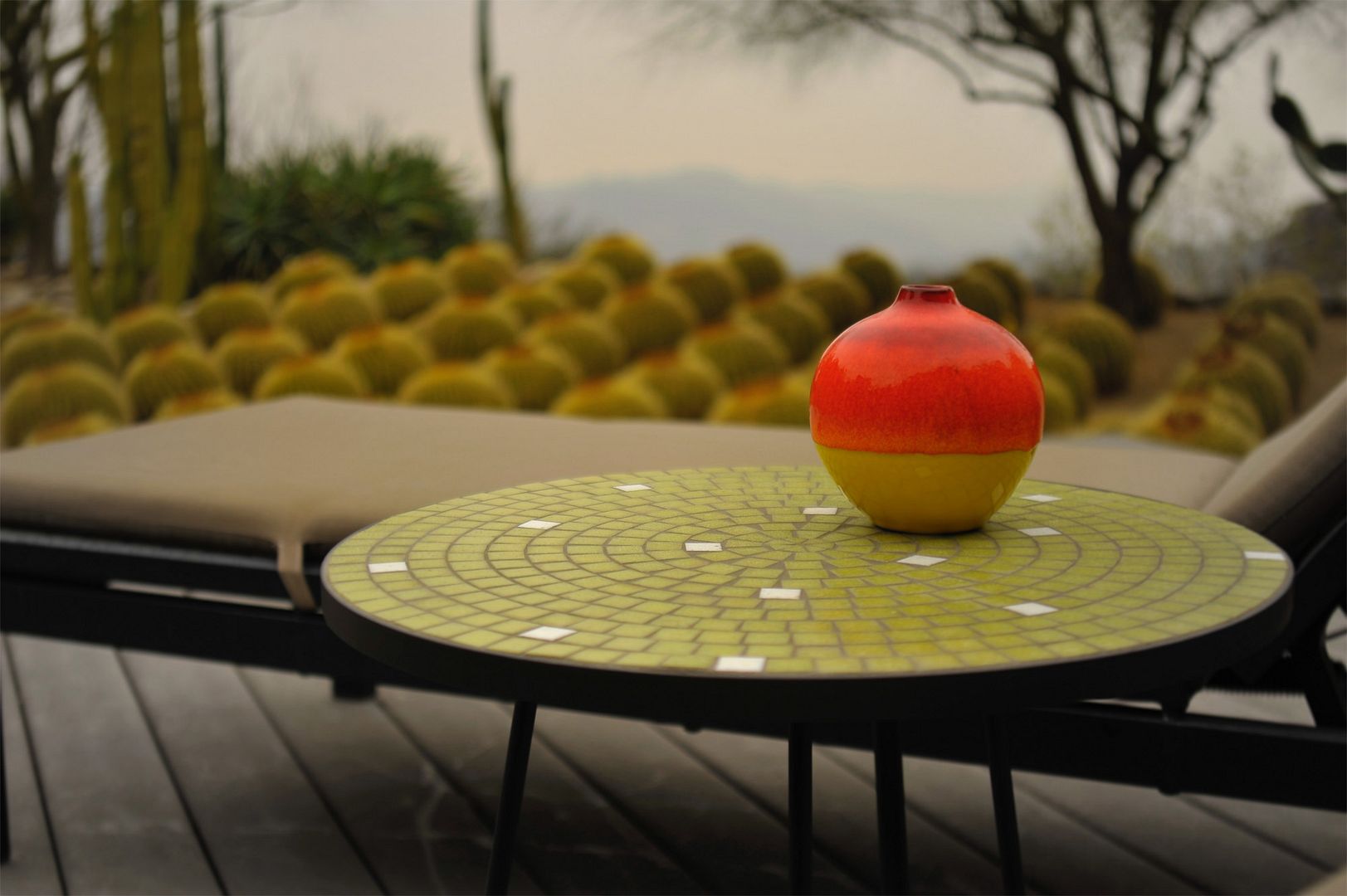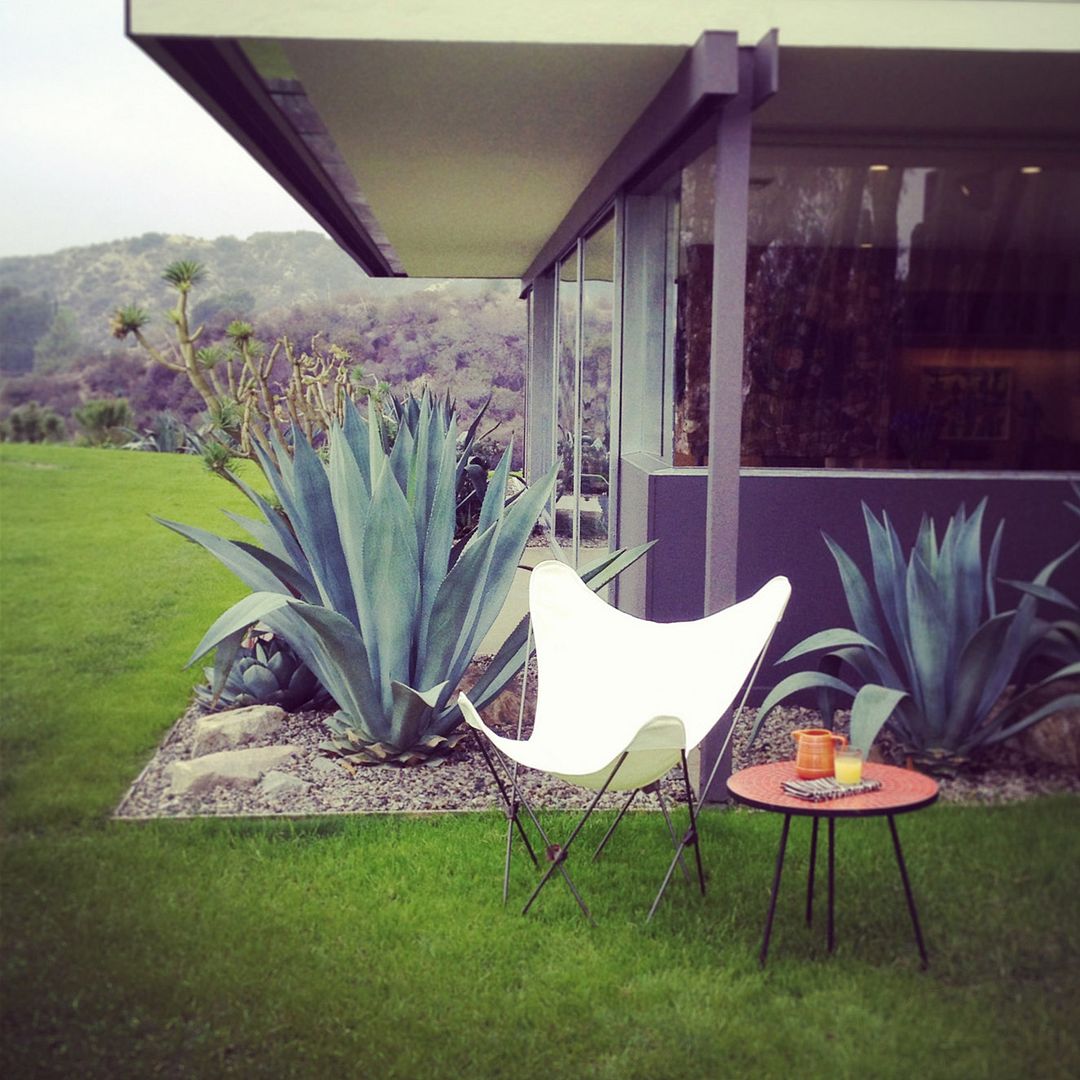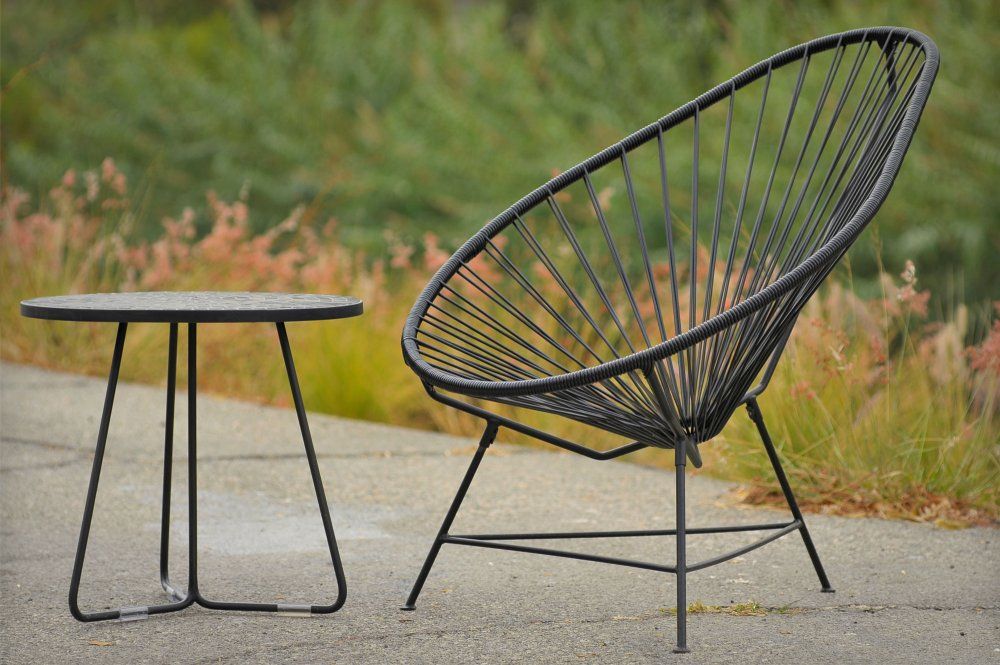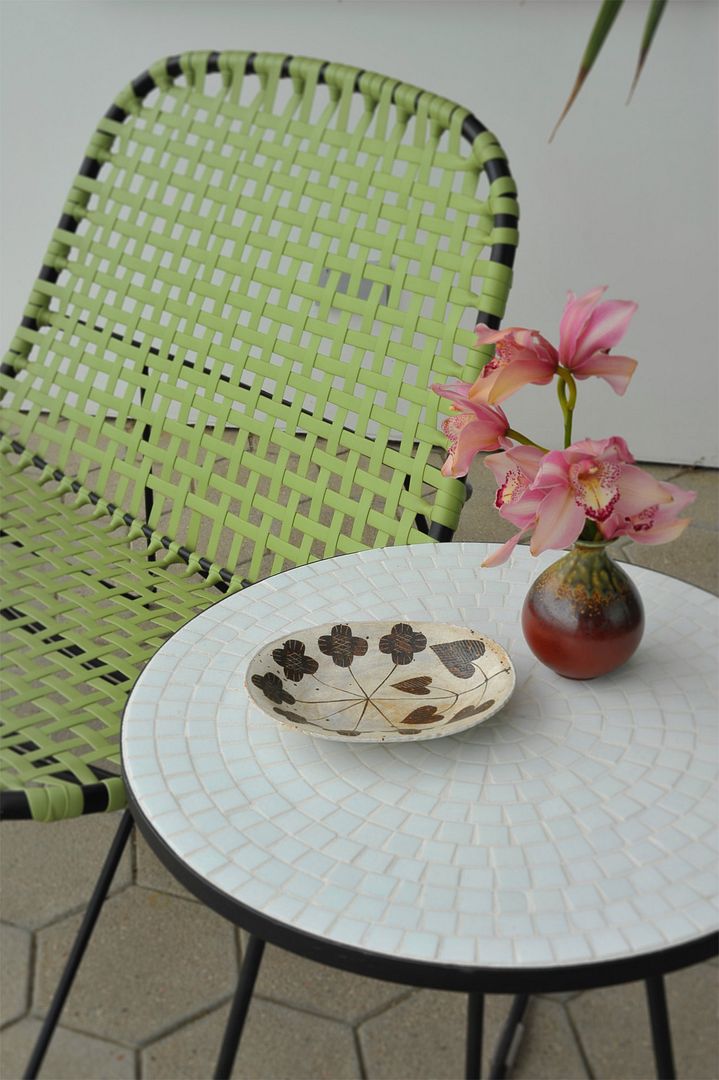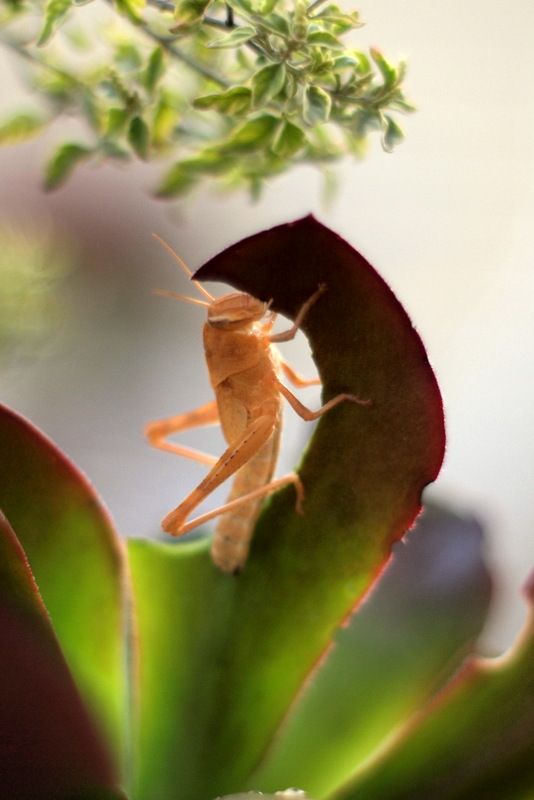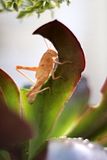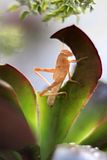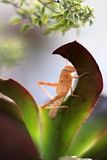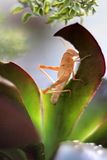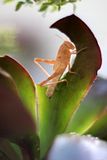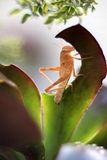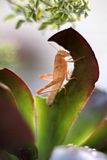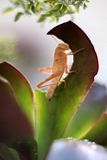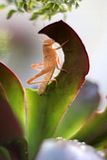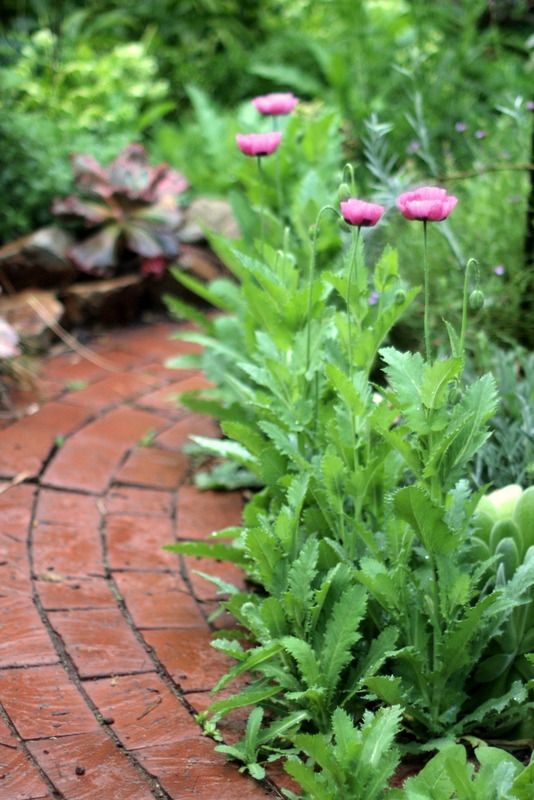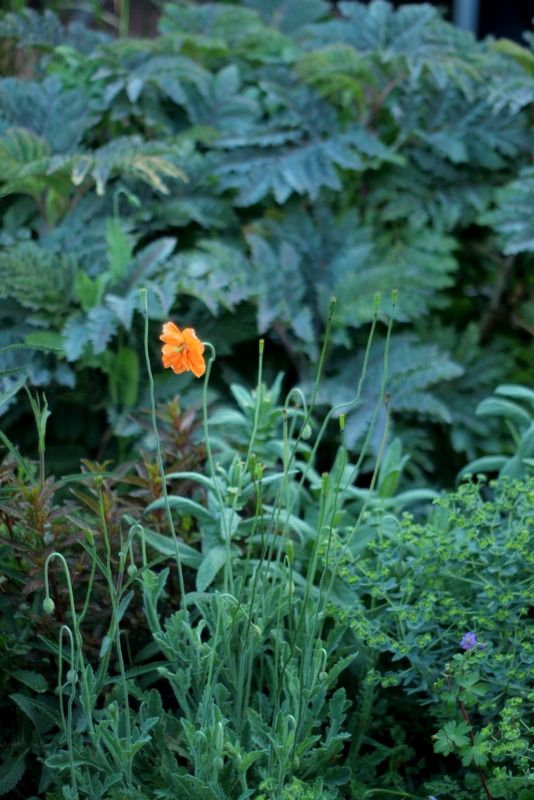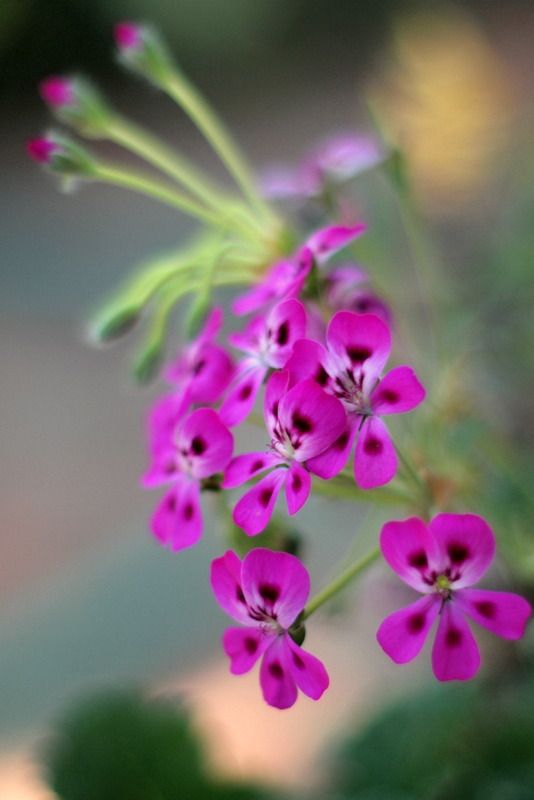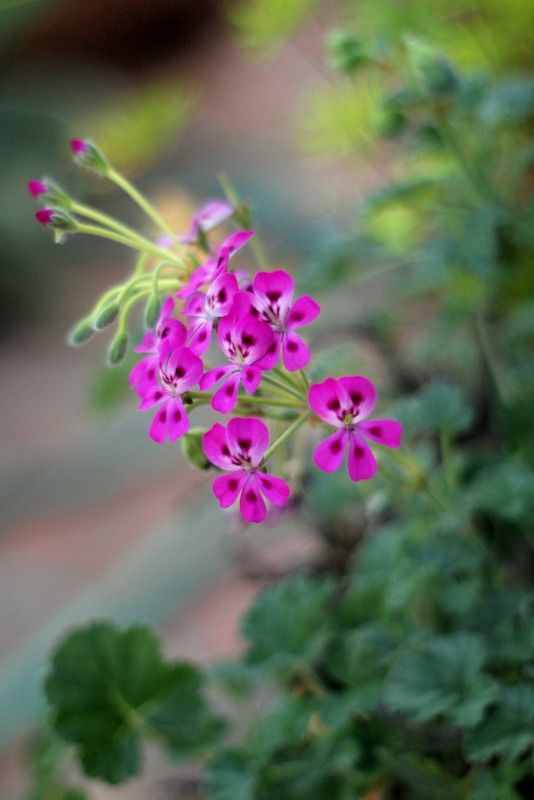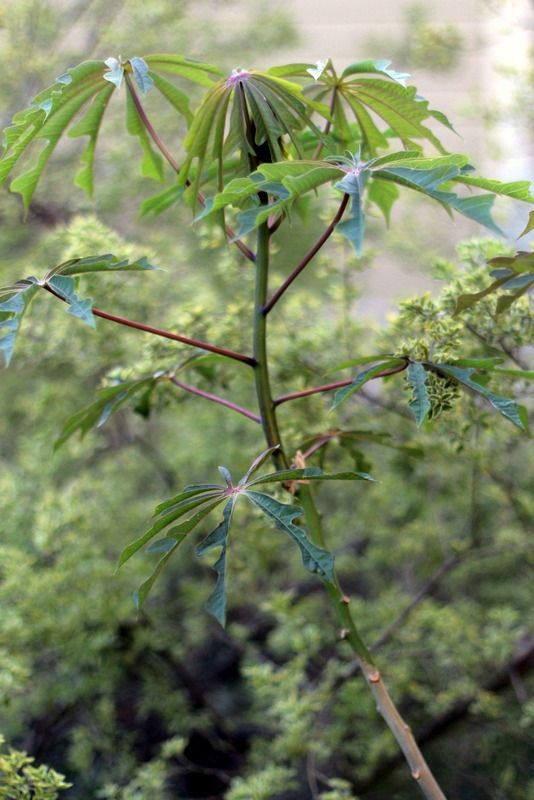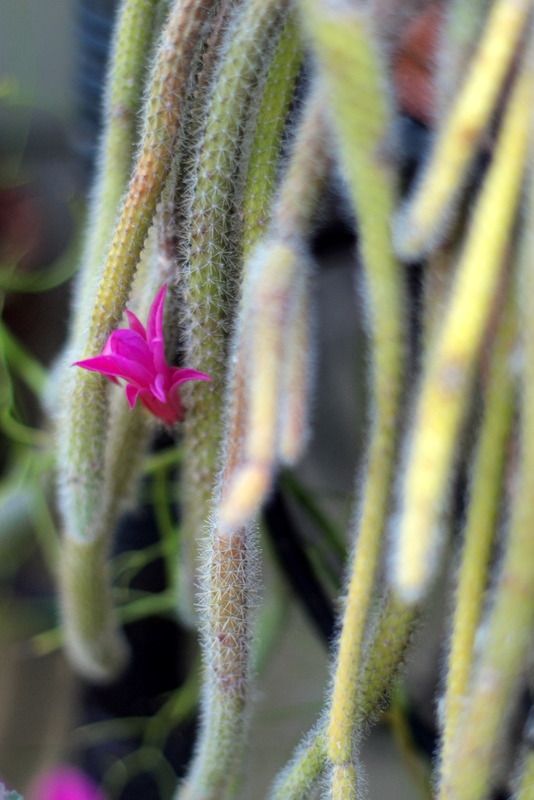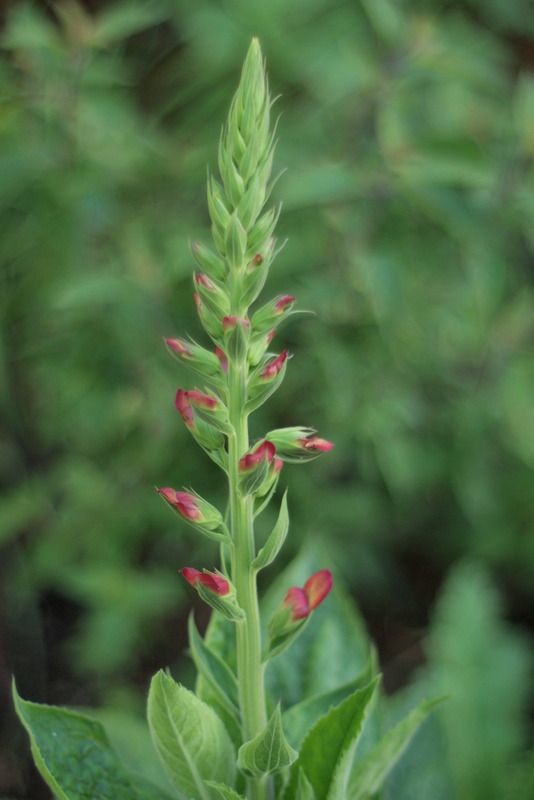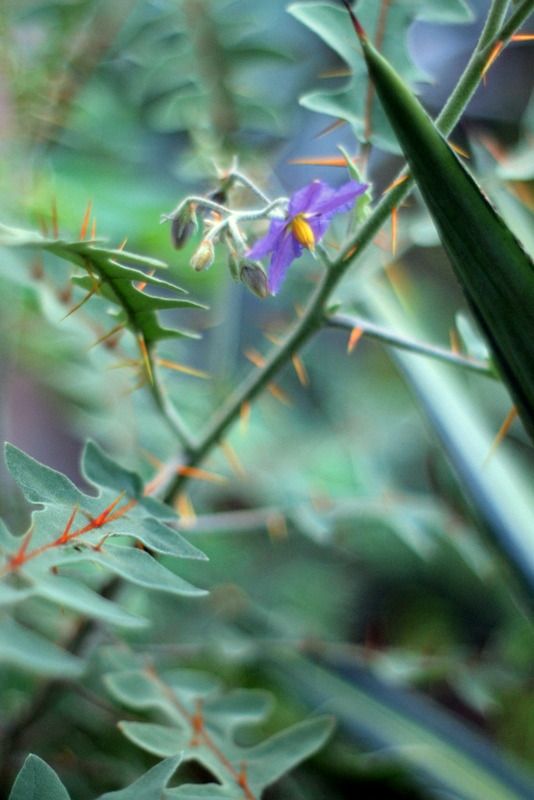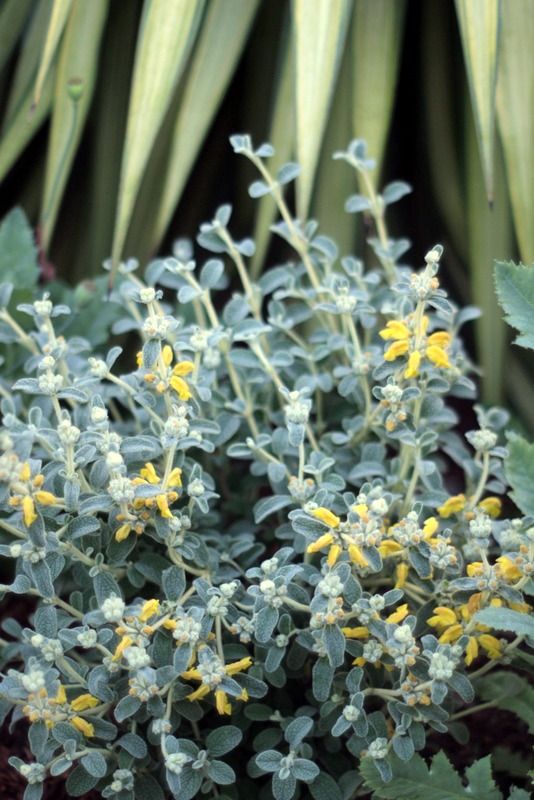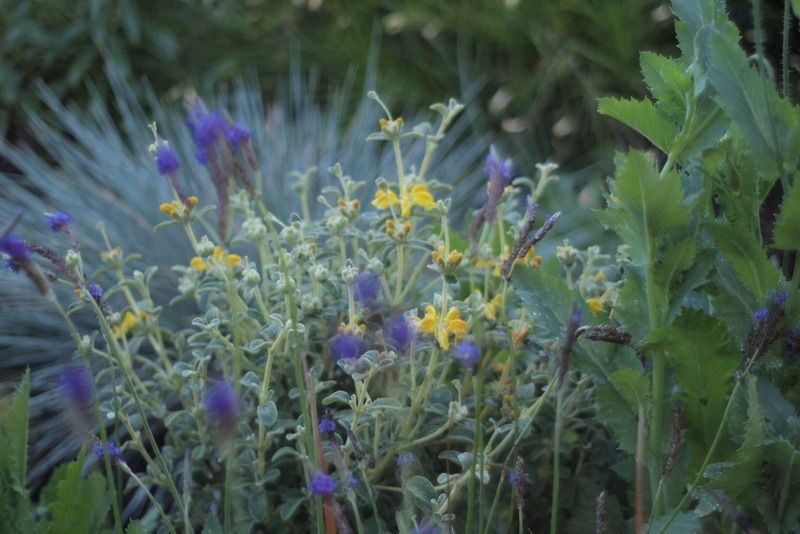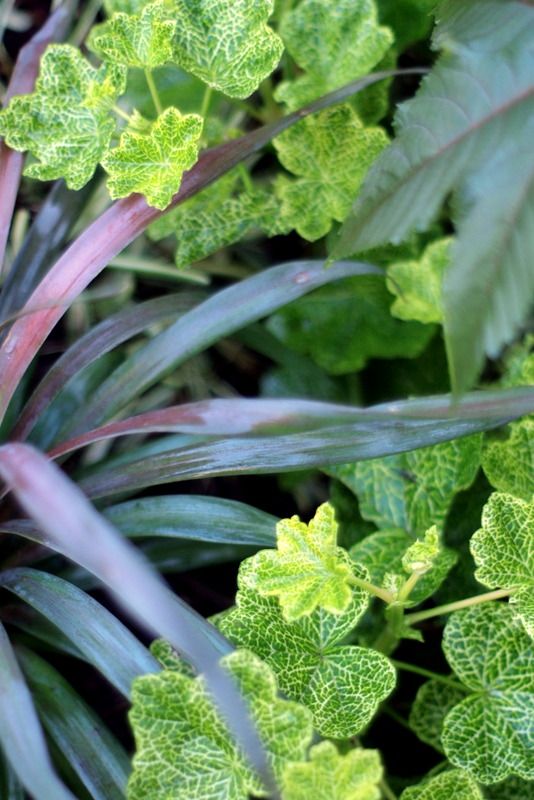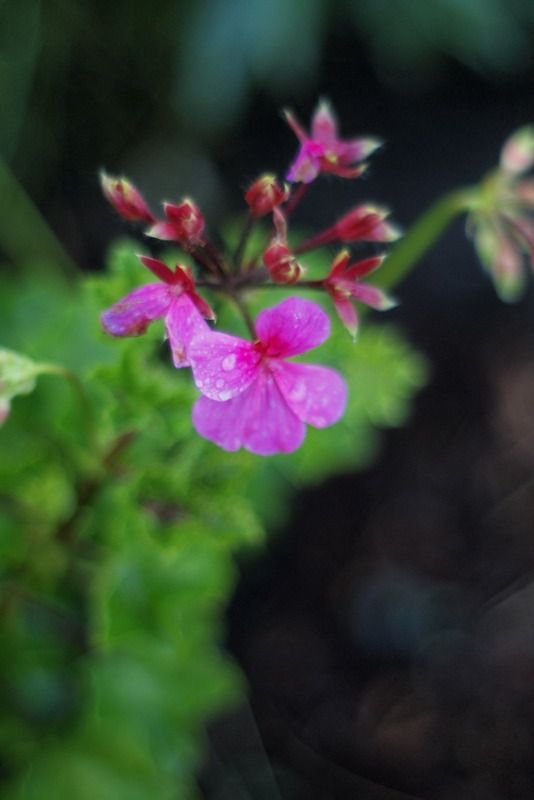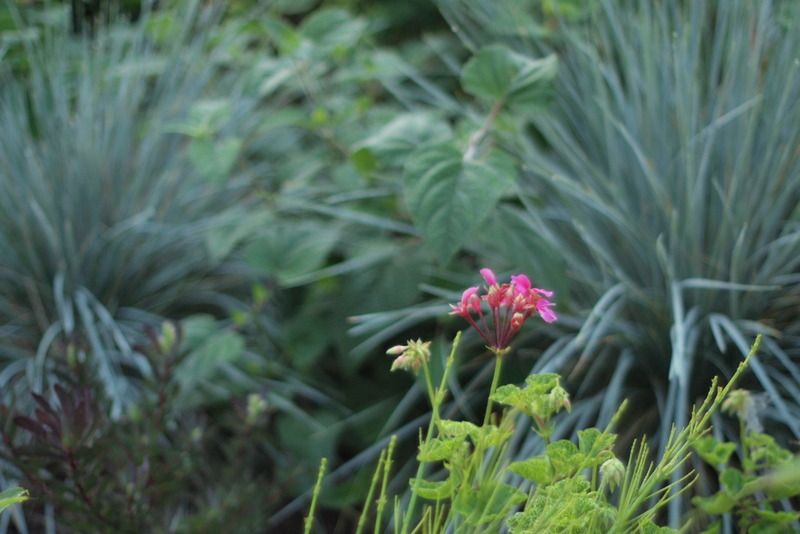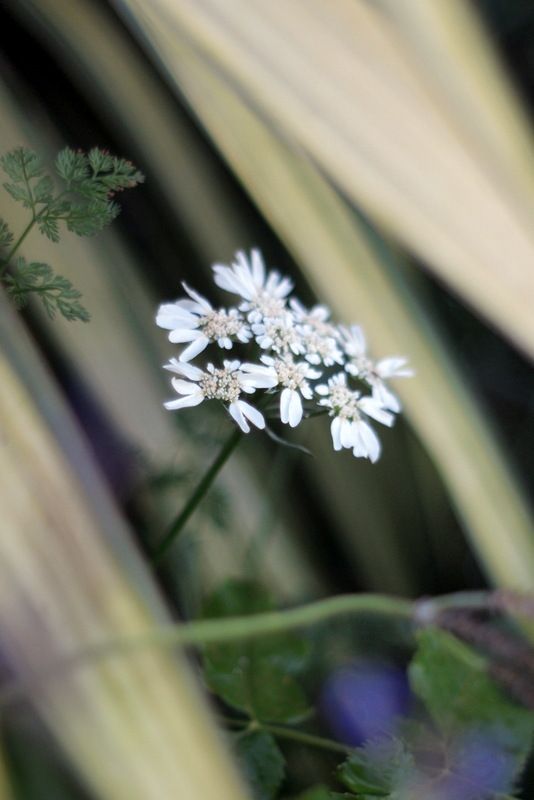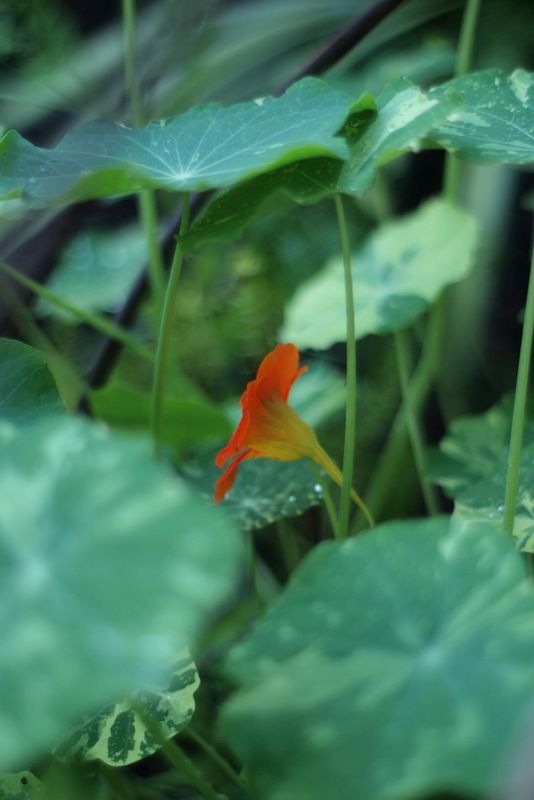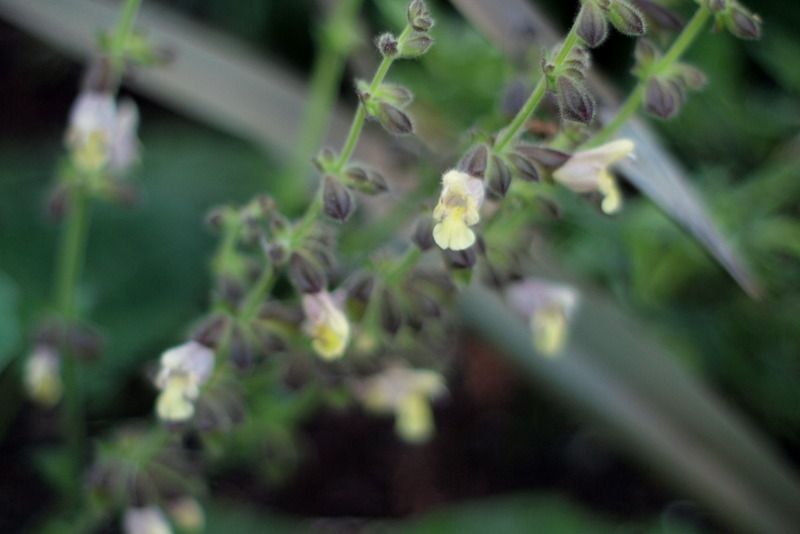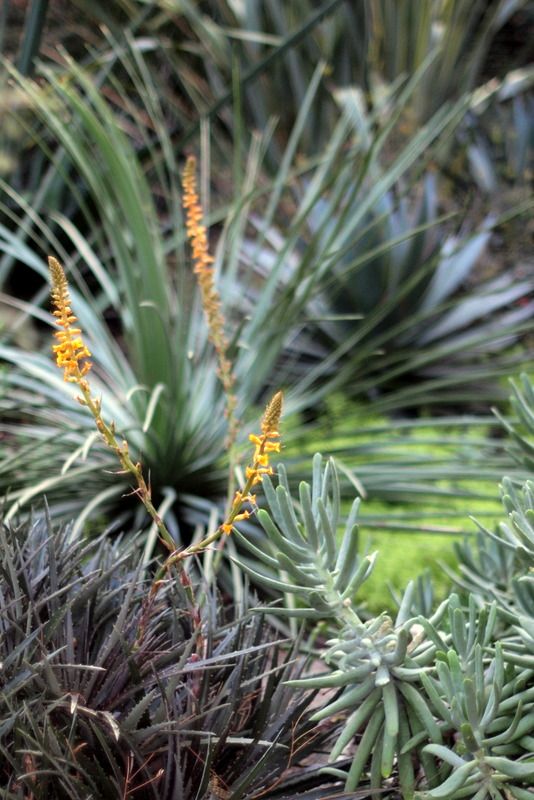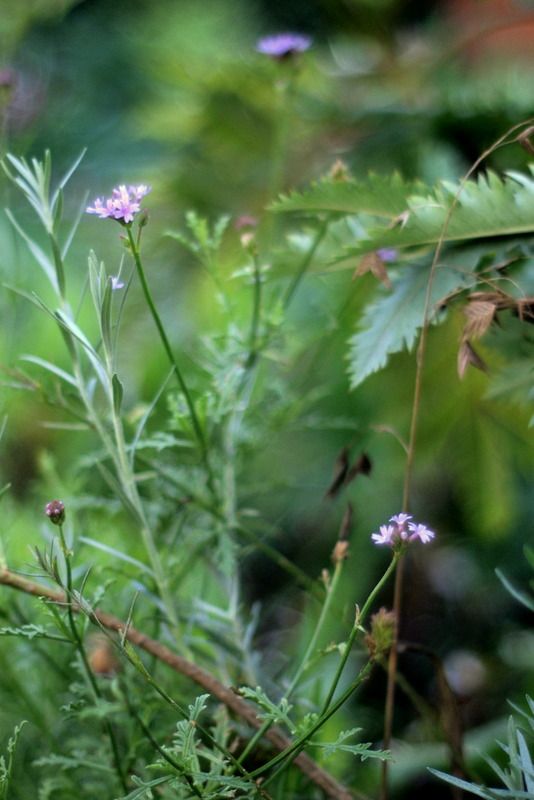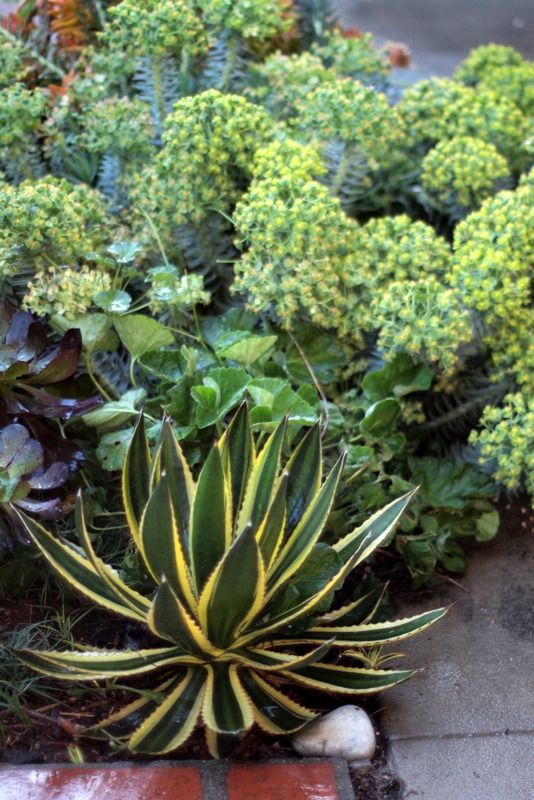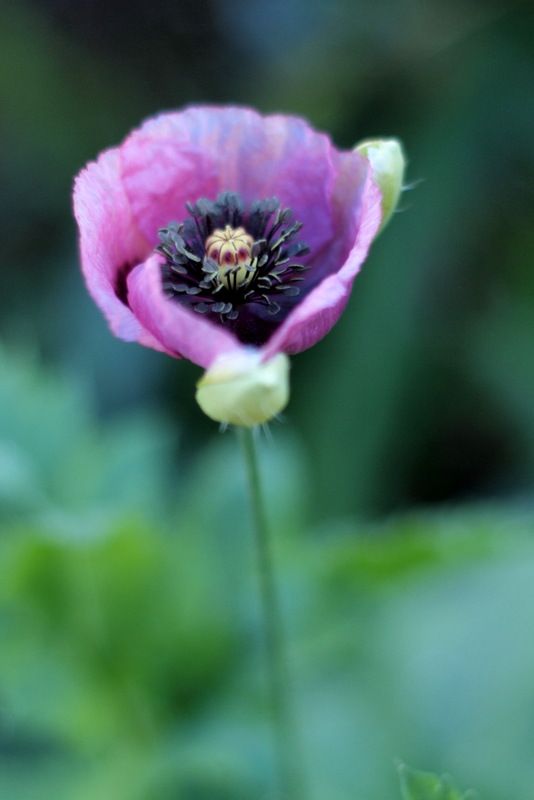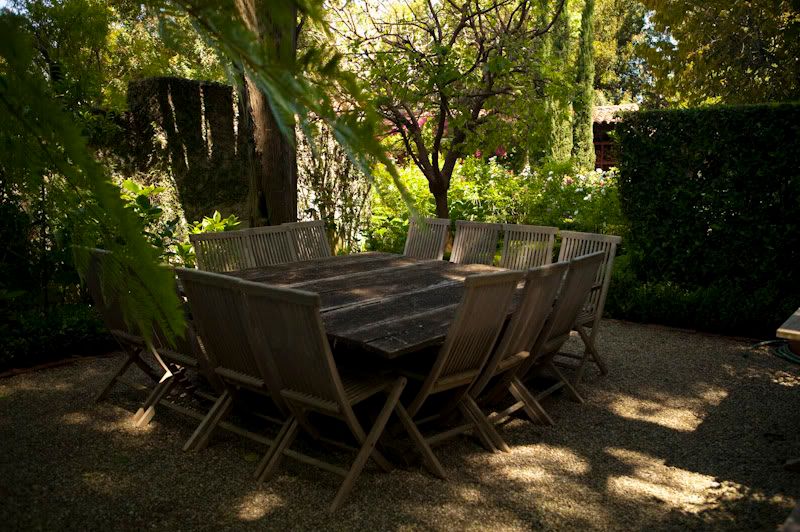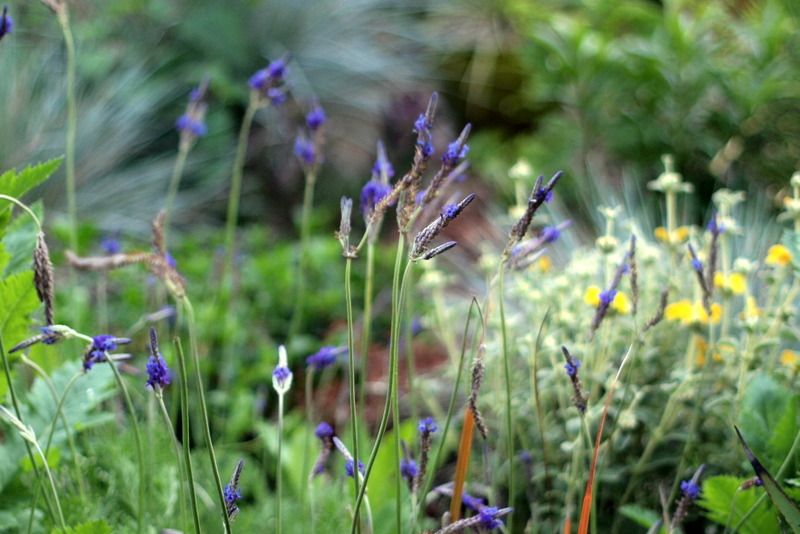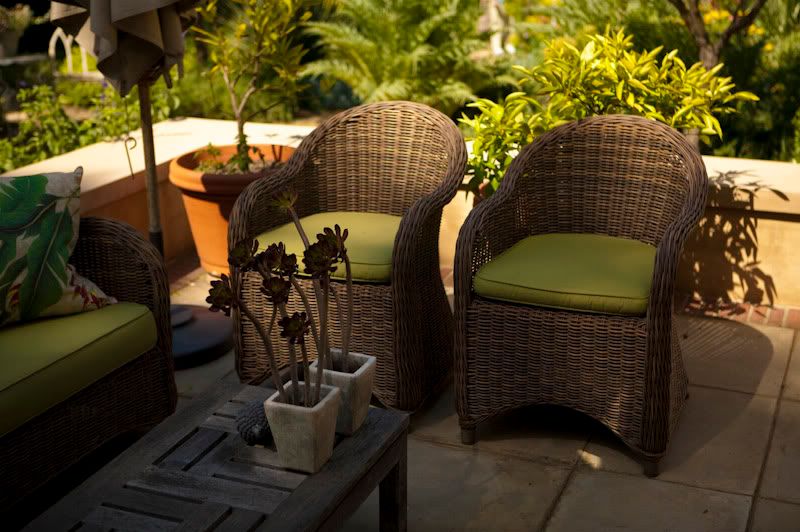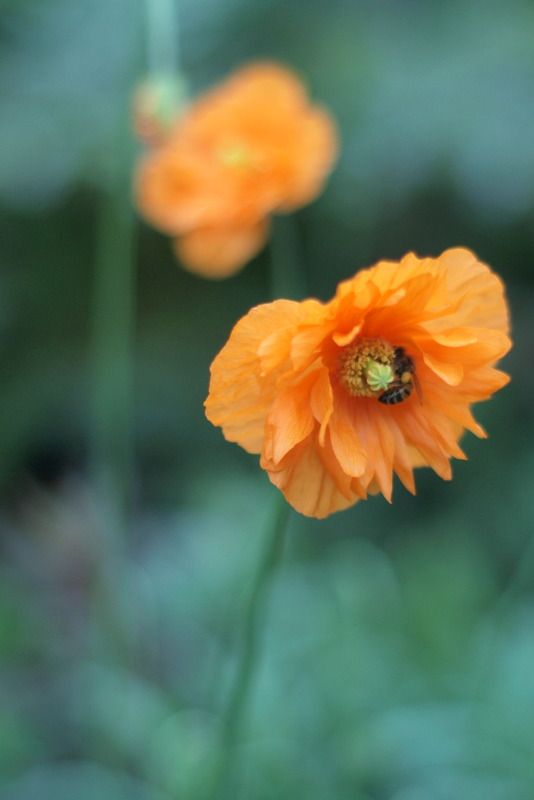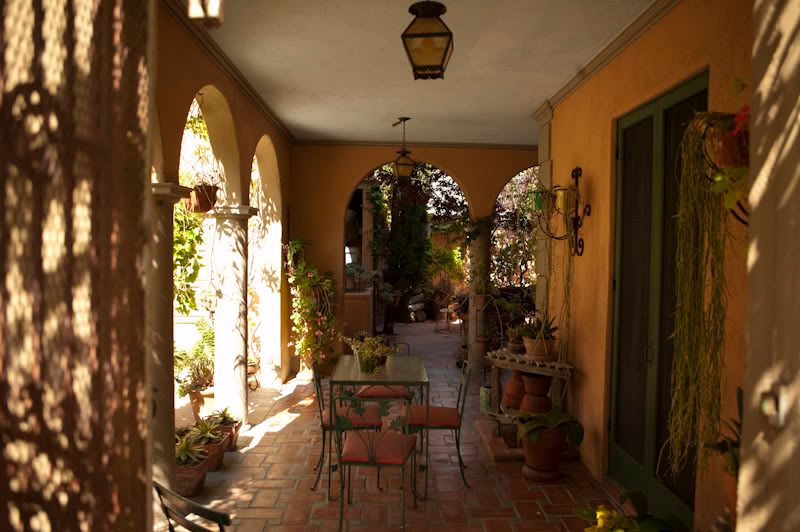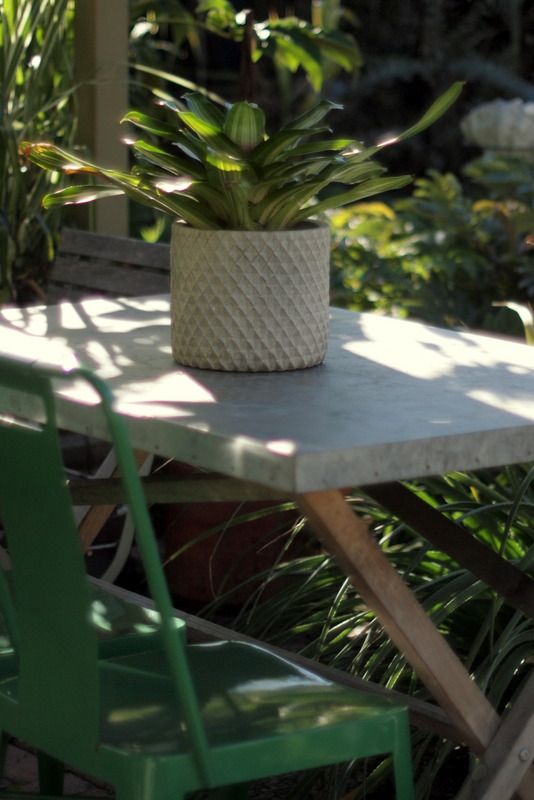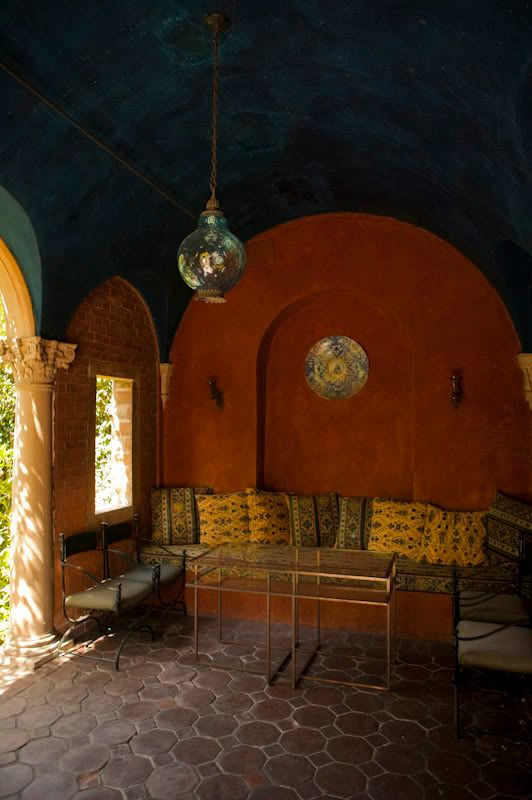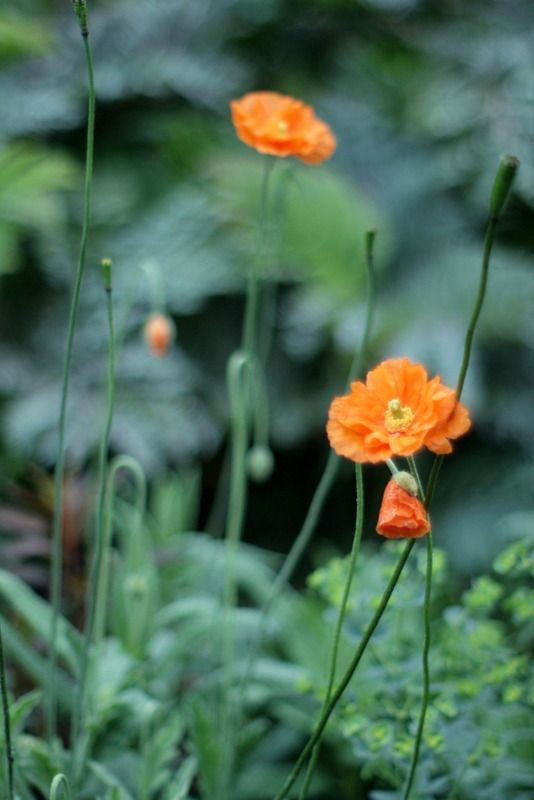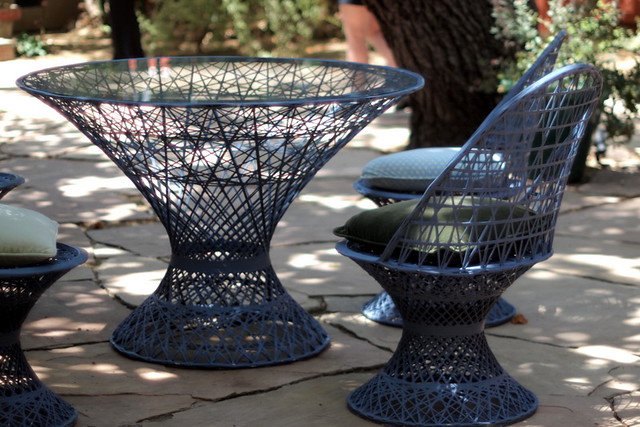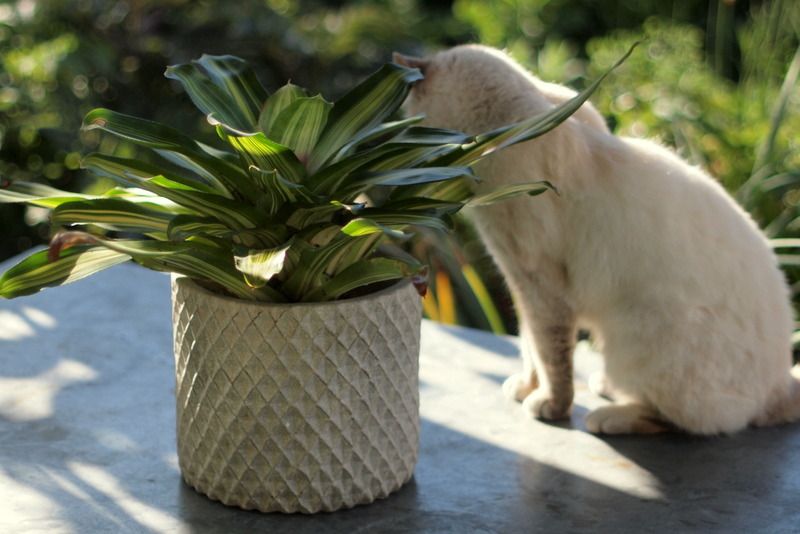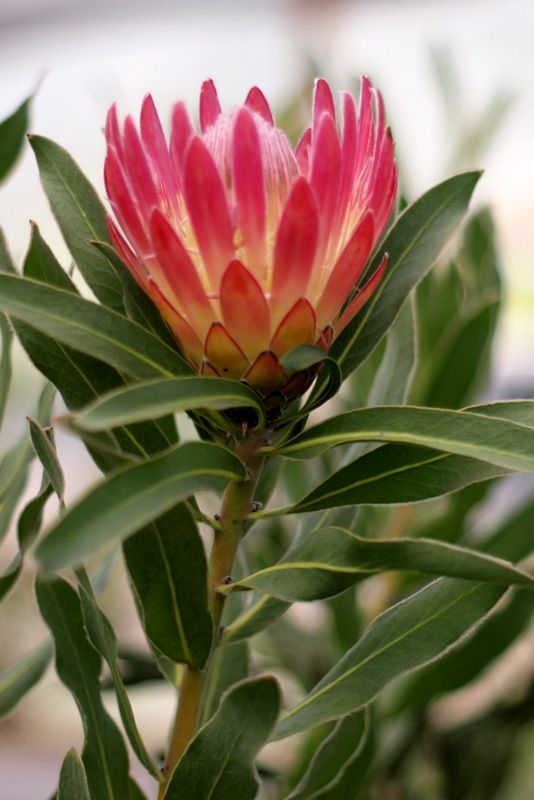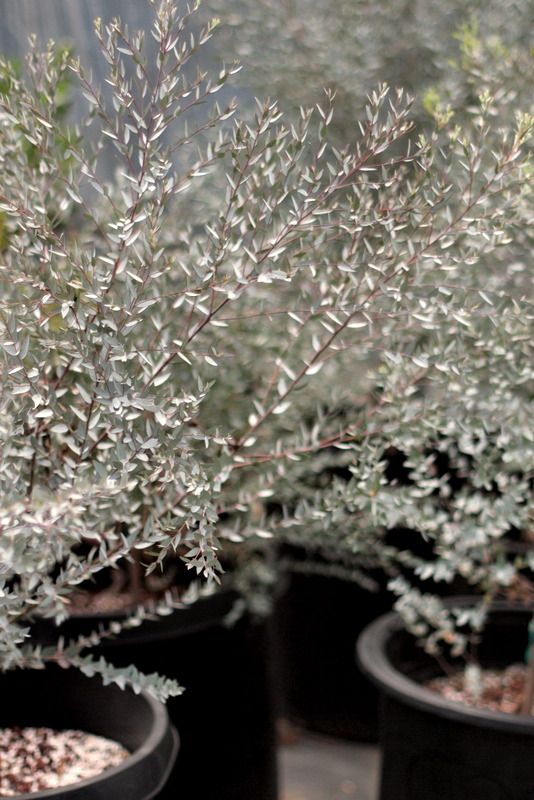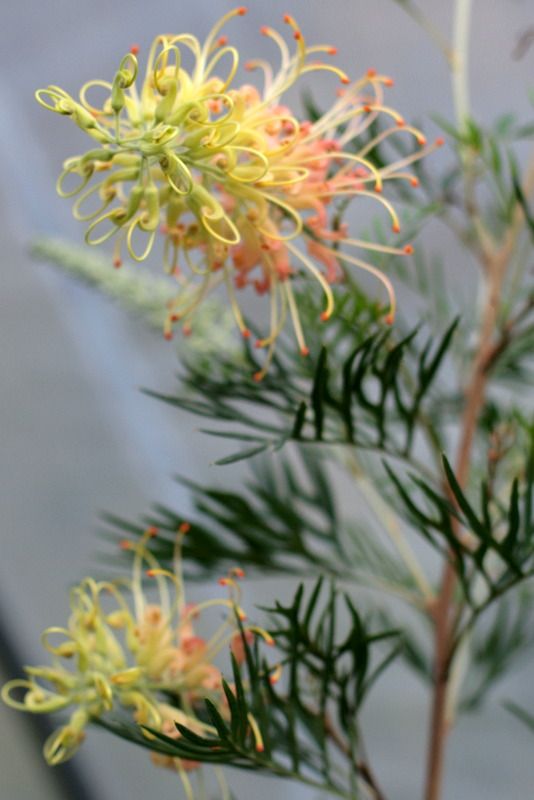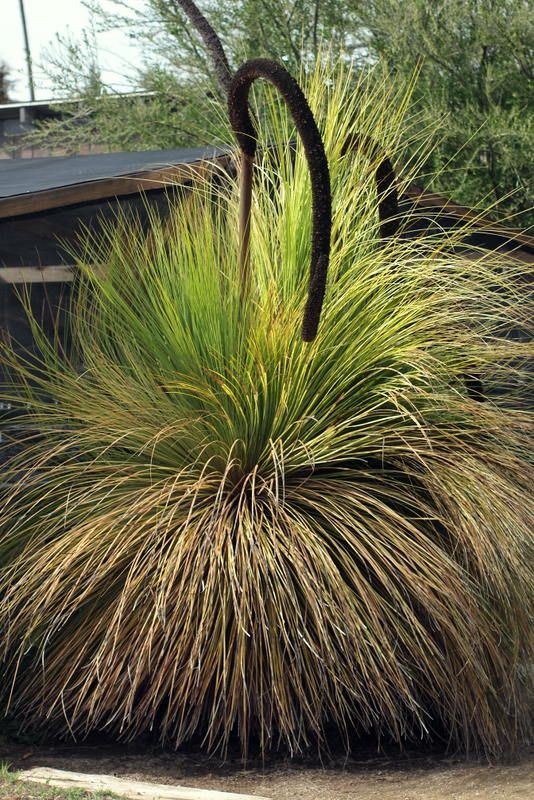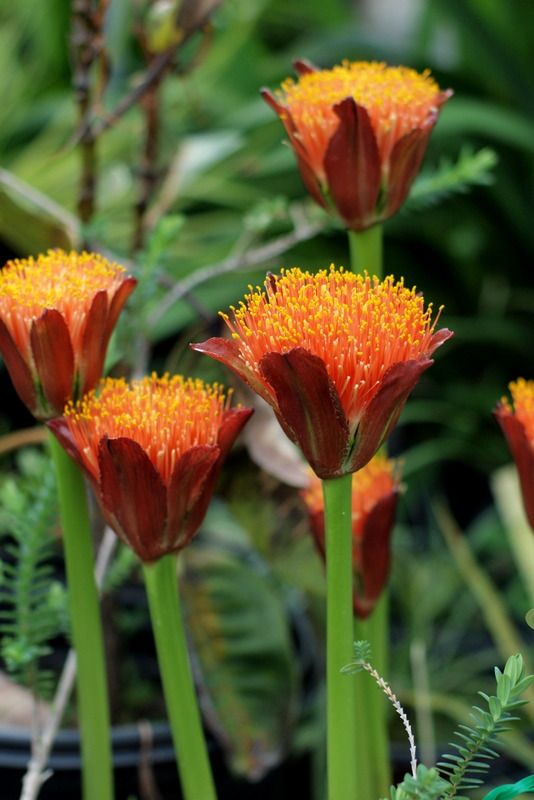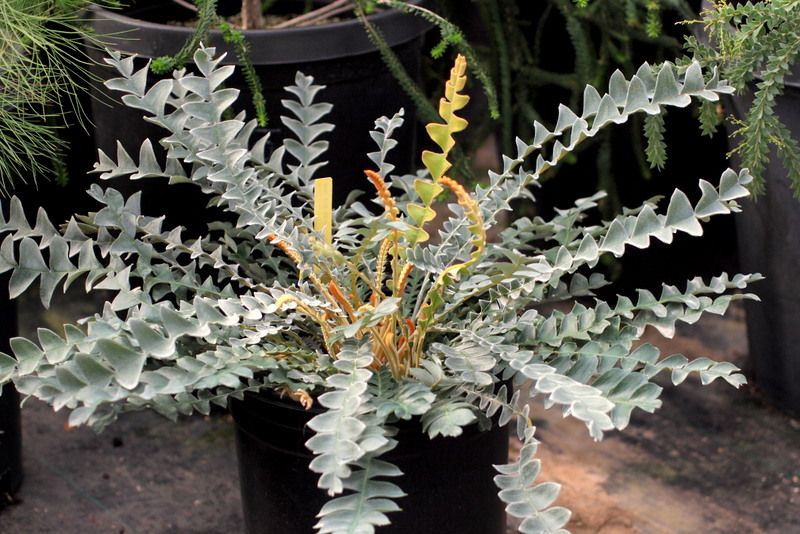“Ancient geologic forces shaped the Ojai Valley that modern-day visitors find so attractive. This part of Ventura County lies in a region geologists call the Transverse Range Province. Transverse means “lying across,” and the mountains and valleys in these parts have been moved by seismic and other forces out of California’s usual north-south orientation into an east-west configuration.” — The Los Angeles Times 2/17/90
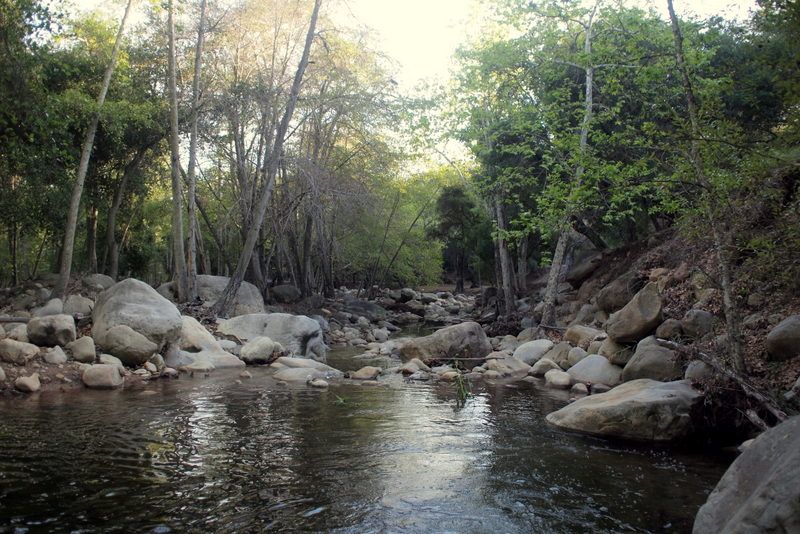
Late afternoon, crossing the seismic detritus of a rock-strewn stream on the entrance road to the Taft.
The Taft Garden is a 265-acre botanical garden near Ojai, California, that was open to the public from 1994 to 2001, when the Ventura County Board of Supervisors closed it, citing neighbor complaints and permit use violations. A particularly toxic case of NIMBY, it seems. It can still be visited via plant and garden societies, such as the Mediterranean Garden Society, which is visiting this month, March 14 and 15, including in the tour other local gardens such as Lotusland. When I shopped at Jo O’Connell’s Australian Native Plants Nursery last week, she invited me to have a look around this garden where so many of her nursery plants have found a home. I knew none of its turbulent history at the time, but even before arriving I was experiencing more than the usual pre-garden visit jitters. It’s a bit difficult to find, and Jo’s cheery caution to talk to no one along the long, hilly entrance road added an unexpected layer of intrigue to the visit.
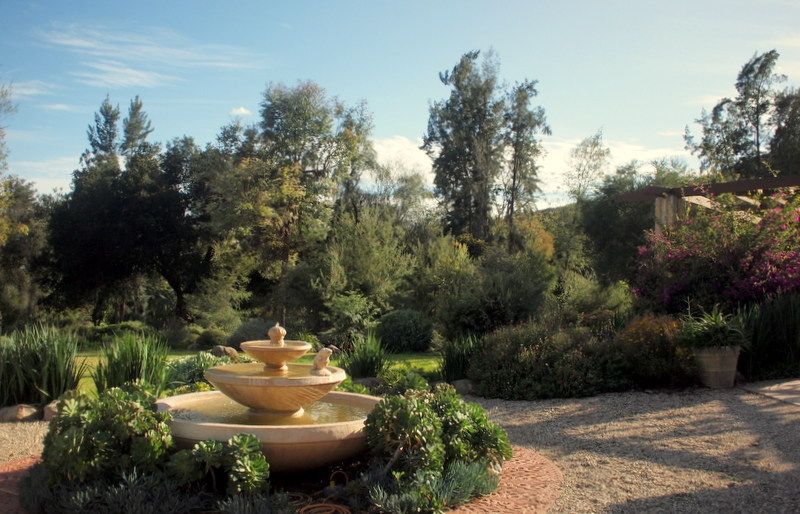
Marty dropped me off at this pavilion/visitor center then drove back through the garden to find a place to unobtrusively stow the car. His next task was to sign the visitor book kept in one of the three “huts” at the entrance. Jo was very emphatic that we sign the book.


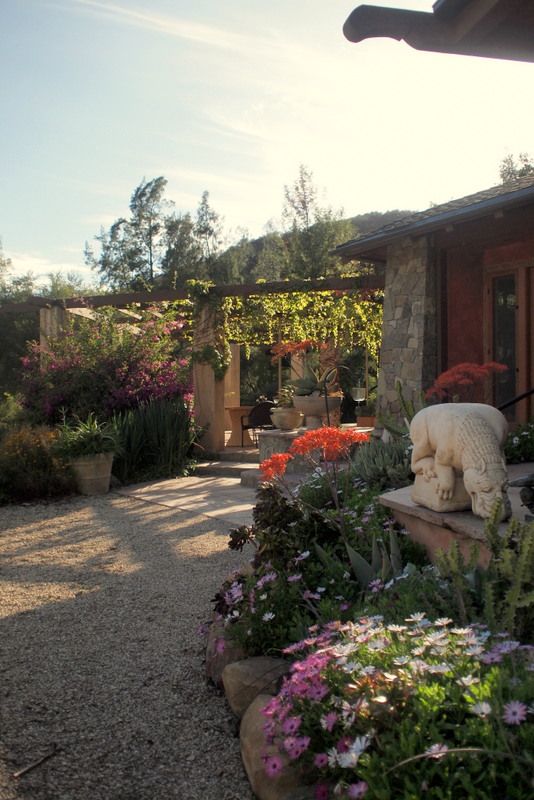
Osteospermums, with Aloe striata blooming in urns. Against the pergola grows bougainvillea, with what looked to be parthenocissus overhead catching the late afternoon sun.
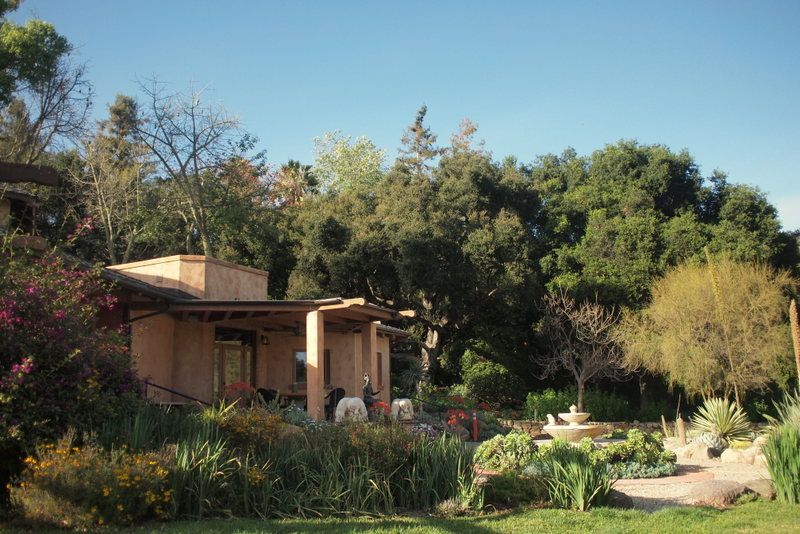
The spiky outlines to the right of the fountain mark a desert garden. Plants from all over the world fill the Taft, with special emphasis on Australian, South African, California natives.
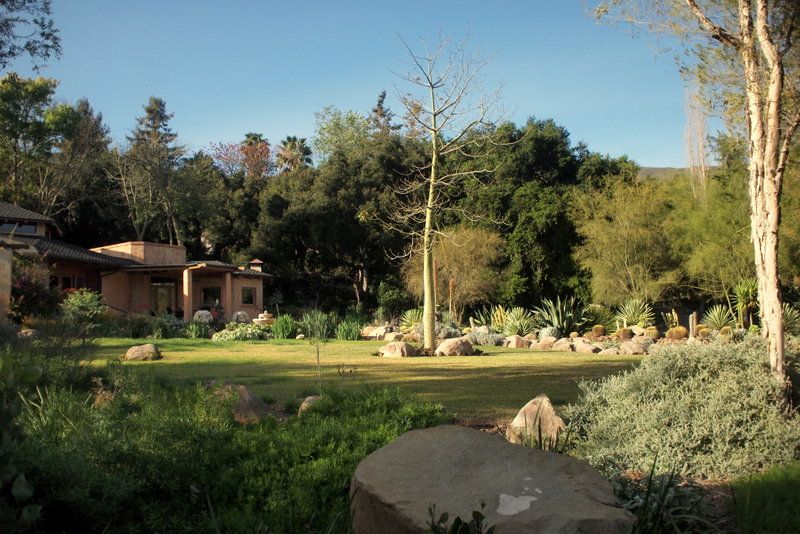
There was a Jurassic Park feel to the place, of an impossibly ambitious dream made real, built and then abandoned after the dinosaurs had dispatched the last of the eco-tourists. It was a truly eerie sensation to be seemingly the only person experiencing such a dense concentration of botanical riches. The last eco-tourist standing, so to speak.
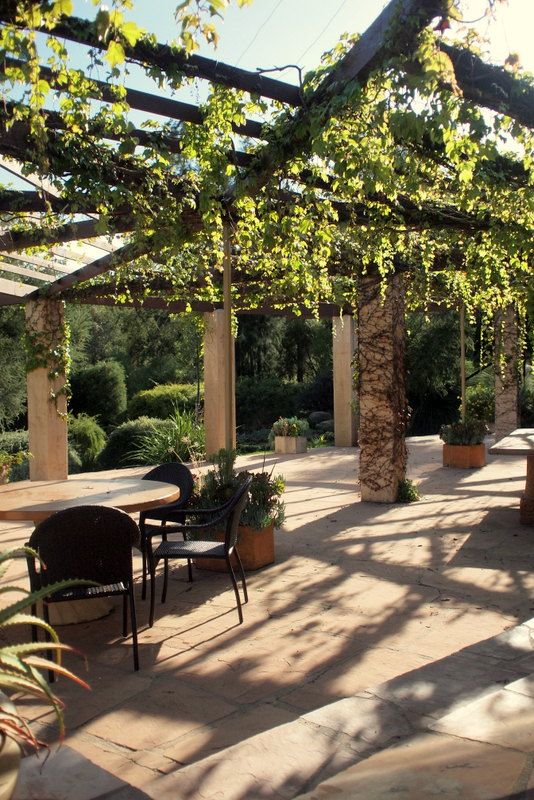

A broad path off the pergola. All the paths were broad, deeply mulched or graveled, weed-free. Acacias were in bloom, but the proteas peak fall/winter. The Taft reputedly has the largest collection of proteas outside of South Africa.
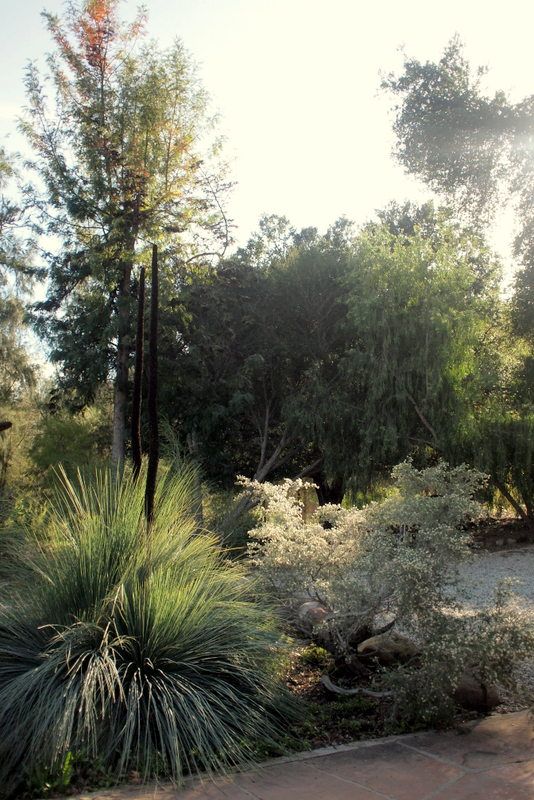
The Taft is a garden where the rare becomes commonplace, like the fabulous xanthorrhoeas, the Australian grass trees, dotted throughout, with their distinctive deep brown, catkin-like blooms.
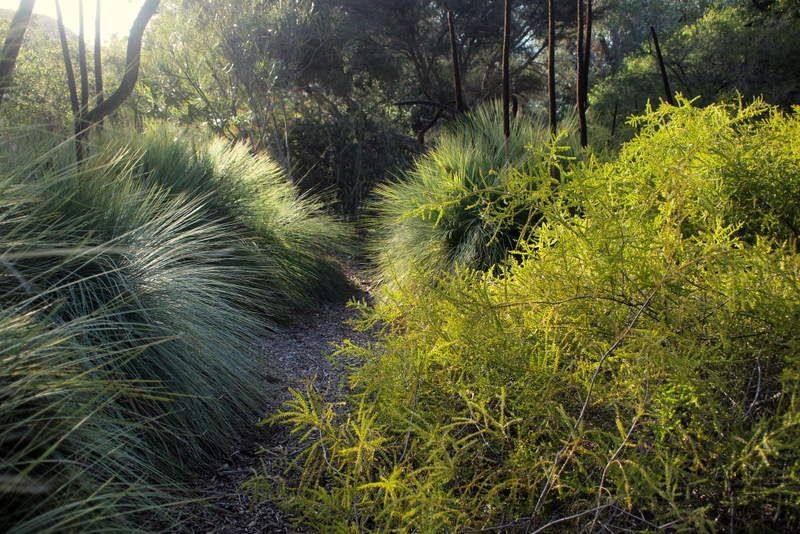
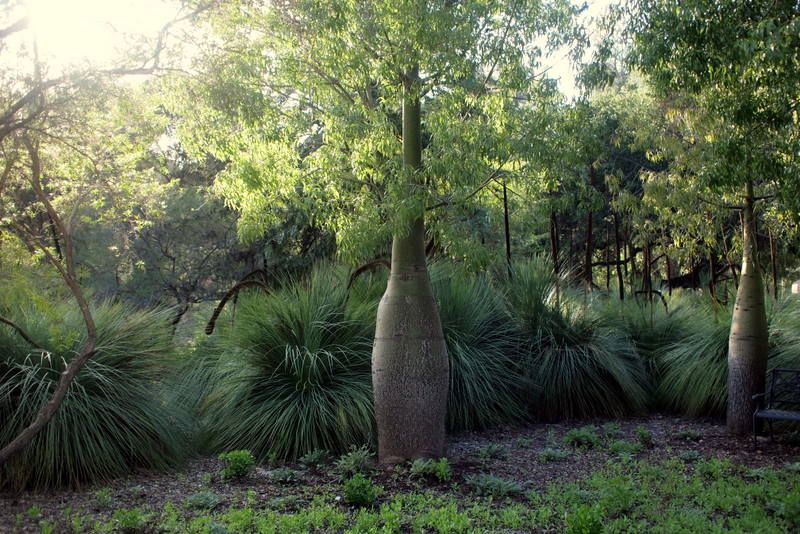
And xanthorrhoeas again, here with bottle trees, Brachychiton rupestris.
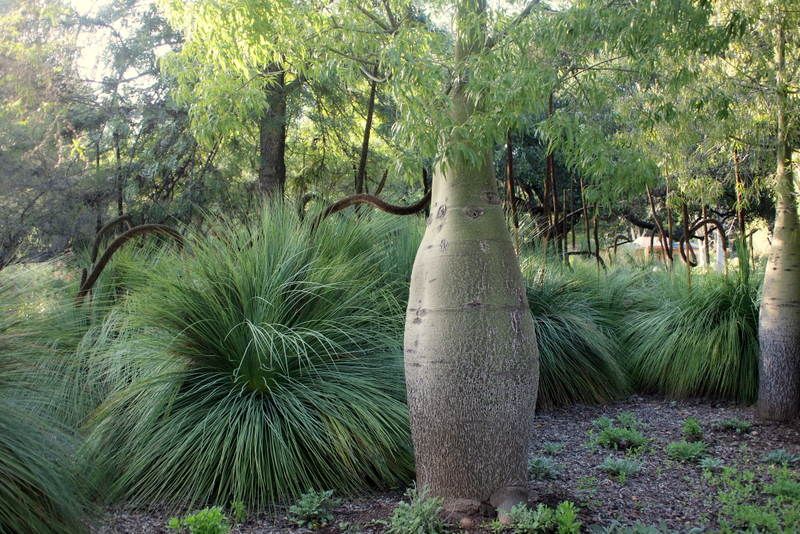
I had less than an hour to visit before the garden closed at 5 p.m, but still lingered quite a while with the bottle trees.
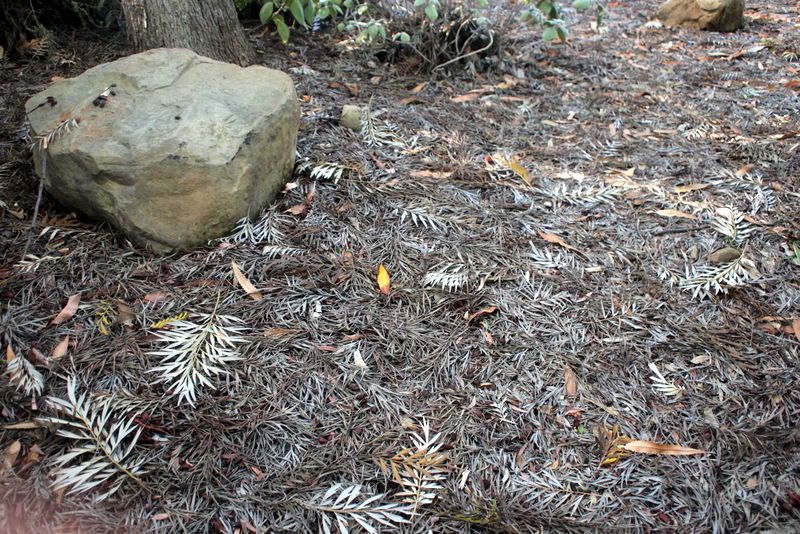
Paths were deep with the leaf fall of grevilleas, banksias.
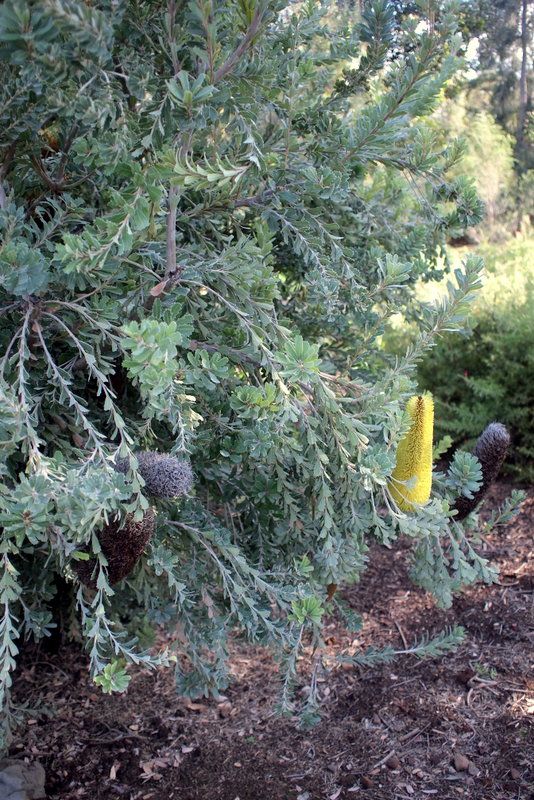

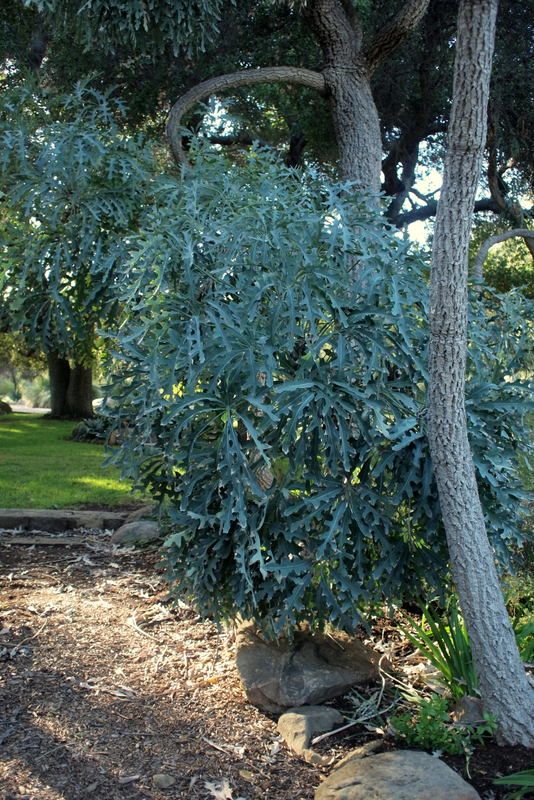
I’m guessing cabbage palms/cussonias.
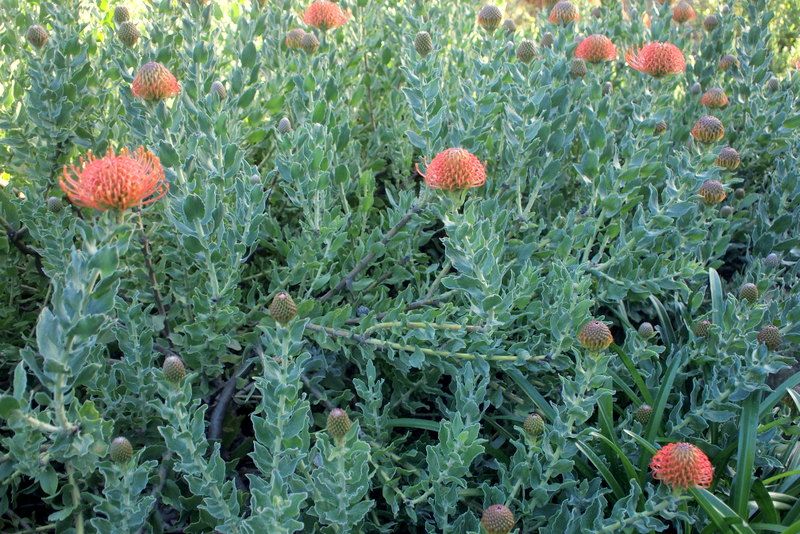
Leucospermum. I just planted an orange leucospermum at home, ‘Sunrise’
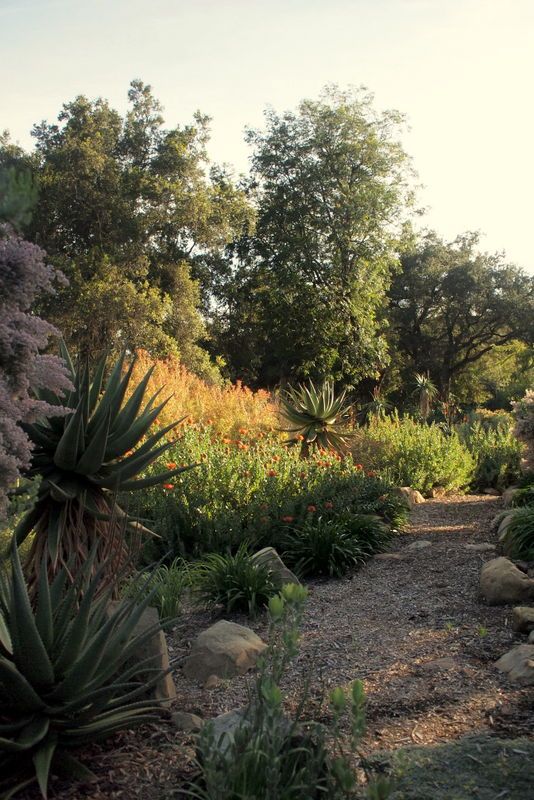

Had there been an aerial record of my visit to this garden, you would have seen me scuttling across the landscape like a demented beetle, following any turn in a path that presented itself, erratically reversing course to chase a glimpse of something remarkable in the distance. I covered about as much ground as a beetle could, too, of this vast place. After 45 minutes, I began to hear the distinctive whistle Marty and I use, which I knew signaled the end to our visit. At this point I began to jog along the paths, took a couple of wrong turns, then finally had to stop and listen for the whistle call to lead me out. I wasn’t trying to get lost. Really.
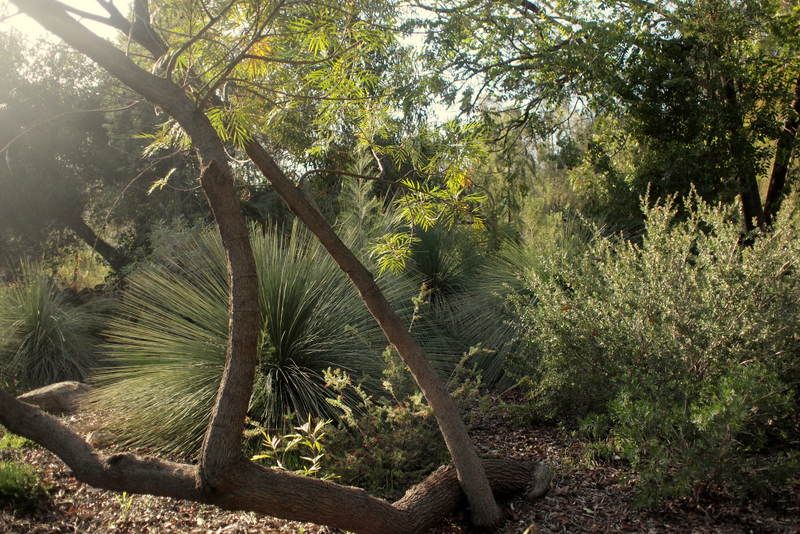

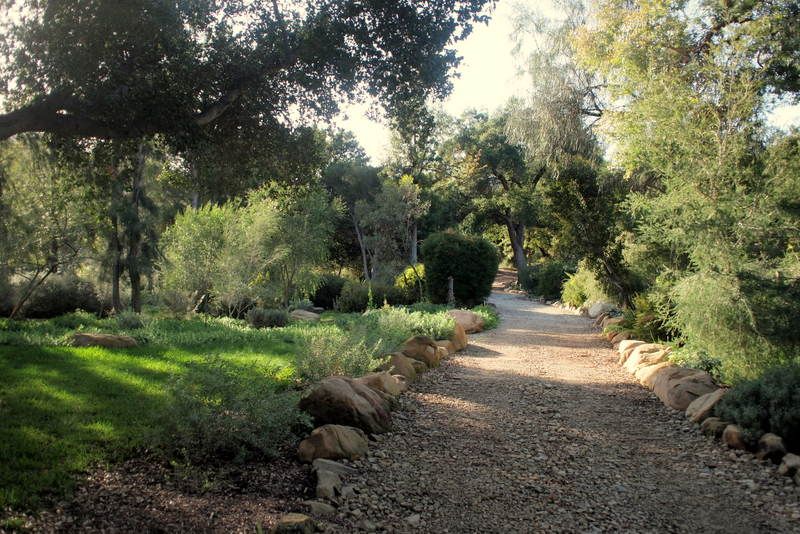
The many rocks tumbling through this valley 15 miles from the Pacific Ocean have been collected to line paths and create low retaining walls.


Following Marty’s whistle, a glimpse of the windshield emerged just beyond some aloes.

The car was parked near this little garden at the entrance.
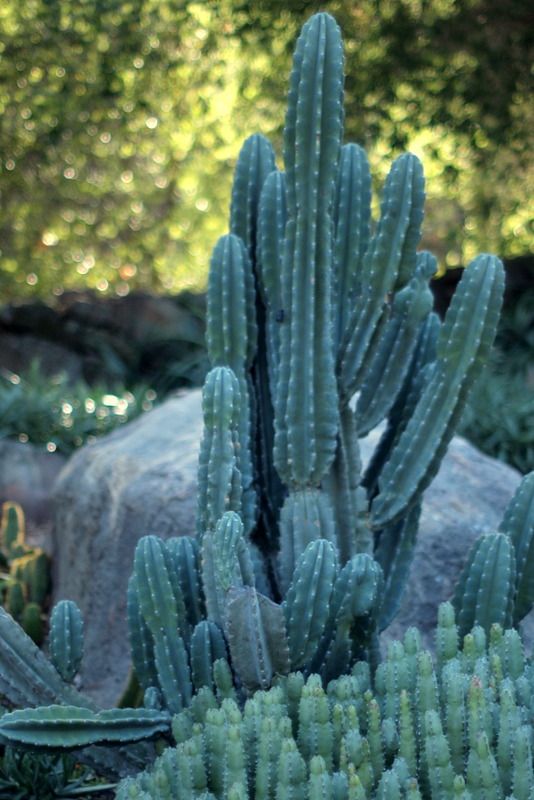
So instead of heading for the car, I lingered here while the minutes ticked closer to 5 o’clock and the whistle grew more insistent. The sun was setting and the gates were closing on the first of what I hope to be many visits to the Taft Garden.
(Can’t thank you enough, Jo!)
For more background on the Taft, see this reprint of a 1996 article from Pacific Horticulture
